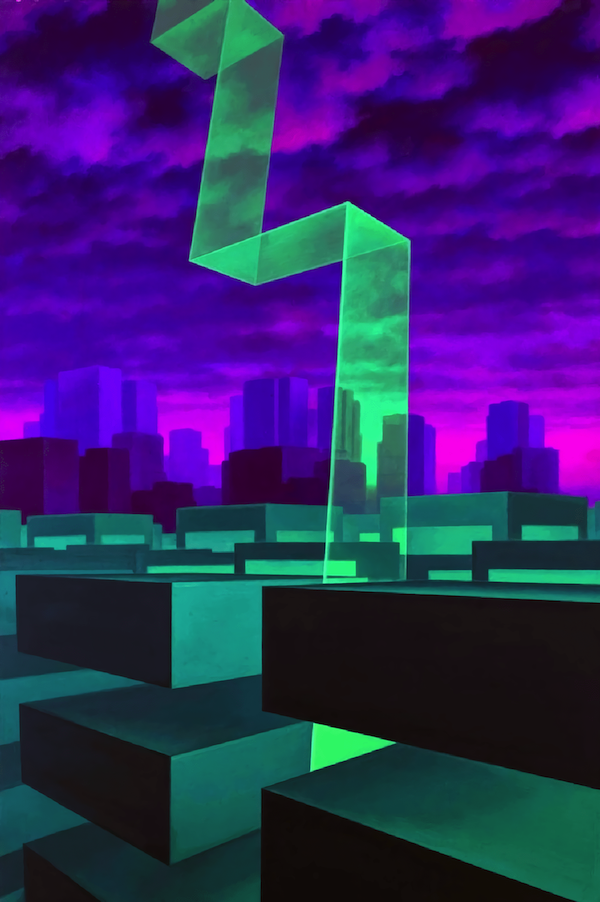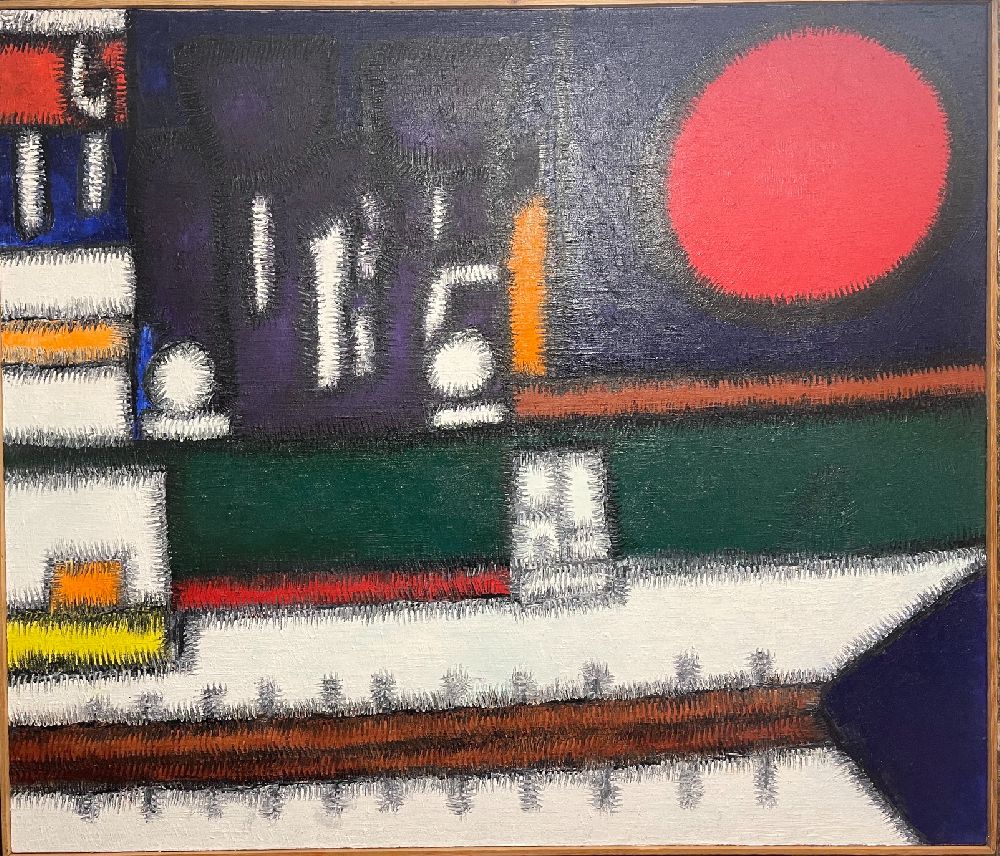
Tell us about your education, your occupation. Are they related to art?
Igor: My education is St Petersburg State University of Aerospace Instrumentation, specialisation: marketing. Of course, there is no art directly there, but, without a doubt, marketing implies a broad outlook on life. Of course, I’ve always been interested in art, because in marketing you need to build mental constructions based on the cultural code, the general cultural background, in which art occupies a certain part.
Alisa: I'll say it much simpler and shorter. I’m a psychologist by education, I also had nothing to do with art (contemporary - ed.), although I went to art school, was interested in painting, always went to museums.
When did your love towards contemporary art start?
A: To be honest, it was difficult, we simply didn’t understand it at first. We were interested, went to galleries, were at exhibitions, but simply did not understand a thing. After Erarta there were thoughts that the sensations of viewing contemporary art are completely different than from the classics. And then we realized that the feelings we get while watching contemporary art are completely different compared to the ones we have when we look at classic art. We were suspicious of this and also a bit nervous as by some reason we couldn’t understand contemporary things. More precisely, we couldn’t accept them, but then at some point the realisation of necessity to understand them came. The realisation that contemporary art is a challenge. It’s not an aesthetic pleasure for an eye, but an appeal to your intellect, to some feelings, to emotions. This is work that’s done not only by the artists, but also by the viewers. They’re working as well, including the work on themselves. After this thought we fell in love with contemporary
Was everything born out of contradictions and attempts to figure out what it is and why?
A: Yes, because at first there was a challenge and our rejection. I wanted a clear and simple aesthetic pleasure that you get from art. And there was a challenge: contemporary art is not always aesthetically pleasing.
I: Yes, we worked on ourselves, we didn't just study, we went to museums a lot, visited Tate (London), MoMA (New York), the Pompidou Center in Paris. We studied, watched a lot, and it was through this challenge that Alice spoke about, and the subsequent work on ourselves, that the love of art overtook us. No one forced us, we had no professional task to love contemporary art, this is exactly what happened when we were working on ourselves.
A: I was hooked by this story: art causes a lot of emotions and often unpleasant ones. I want to get rid of unpleasant emotions, run away somewhere, but there is nowhere to run. You watch, communicate, experience emotions, and this also seemed curious to me.
At what point did the idea of collecting appear?
I: Here we have a double story. I bought the first painting with my very first salary, while still being a student. I received some $150 at work and gave $100 for the painting. It's still with us. I would not say that this is contemporary art, it’s more a kind of homage to Cezanne noname-artist, but nevertheless Cezanne is beautiful. It's not a copy, but there are similar tones and similar colors in this work. We really came to collecting a year and a half ago during the pandemic, but not at the famous "Ball and Cross" (Facebook group for collectors - ed.), but at the Vladey auction. I have a friend - Dima Mishenin - one of the creators of the Doping Pong group, with who I worked on advertising. I saw that his work was being sold at an auction unknown to me at that time, "All for 100". I thought, "Is it really possible to buy a painting for 100 euros? We realized later that this was a cruel deception, when in the end this hobby hit our budget hard because it generated a real storm of collecting inside us. We then very successfully bought Stanislav Shuripa, the painting "Lightning".
A: It was our first picture.
I: And that’s how it went! We woke up to some wild gambling excitement of collecting, we started collecting and went in different directions.
Stanislav Shuripa. Lightning. 2008, acrylic on canvas, 222 x 150 cm
How are artists selected for the collection? Why such an unobvious choice for beginners as Stas Shuripa? Are emotions more important?
I: Yes, you are right. First of all, emotions are more important.
A: Shuripa just really fell on our soul. His work depicts lightning, and we just got into a terrible thunderstorm in the summer and almost died. We were completely defenseless before the raging elements in an open field by the river. Very vivid memories. And when we saw this picture, there was no doubt that we wanted it. It leaves the same feeling of anxiety, beauty and power.
So the choice of the first picture was based on your recollection?
I: On a very strong experience! But we choose paintings based on beauty, aesthetics and feelings. First we look at the painting, and then at the artist. It’s clear that we try to choose artists who, let's say, are recognised not only by us, but for this you just need to buy paintings in certain institutions, that is, where the selection was made in advance. First choice: like - dislike, invest - not invest, challenge or not challenge.
Do you consider collecting an investment?
A: It's nice to think about it. But this is definitely not the main thing.
I: Yes, but if there is a job that seems to be sold below market value, then there is a better chance that we will make a decision to buy it. And even then, there is no market value of the painting as such, because there is no market as such yet, so investments are all speculative things.
We understand that in 20 or 30 years this collection will almost certainly cost much more than we paid for it, perhaps it’s even a more profitable investment tool than those that many now use. But this is not the main thing at all. We don't buy paintings to sell them at all.
Do you have any favorite mediums? What is the basis of your collection: painting graphics or sculpture? Or are you trying to collect everything?
A: We started with painting, and mostly it's oil and acrylic. But then we also began to fall in love with various sculptures. Now we just adore Antonina Fatkhullina, because she also causes us a lot of emotions. Now we want to expand in terms of some sculptural works.
Antonina Fatkhullina. Sirin. 2020, metal, welding, 60 x 30 x 30 cm
Tell us about the geography of the works in your collection
I: Basically, it's Moscow and St Petersburg. But here I must say that it’s very curious that in Moscow, for example, they don’t know St Petersburg artists, and in St Petersburg Shuripa for example is unknown. Few people know him, although he’s the rector of the Joseph Bakstein Institute of Contemporary Art. Yes, there was an exhibition at Anna Nova, but I'm not sure that everyone heard his monotonous voice, which for a long time and meticulously declared different regions of Russia the territory of contemporary art.
You are strengthening our Moscow-Petersburg friendship!
I: Yes, it needs to be done. I met with Shuripa, he also said, my God, we don't know each other at all like in the Middle Ages. In America, it is impossible to imagine that…
A: ...that every city has its own culture.
I: Yes, that each city has its own culture and they don't know each other.
A: Well, they know Timur Novikov.
I: Yes, Timur Novikov fired, but, for example, the divine things of the "Sterligovites" are generally unknown. Although, the same period of Moscow nonconformists in St. Petersburg is known. Art itself, as a community of thought, has a lot of things ahead of it, because now it is still in its infancy.
You are quite new to collecting. Which artists have already managed to establish friendship with you?
I: Friendship with artists is one of the great pleasures of life. You’re actually touching people who are mediums between a certain cosmos, God, the universe and this Earth. And these "mediums" who create wonderful things during the creative act - they are insanely interesting people. Oddly enough, we are familiar with many and we can say that we are on very good terms with some. Of course, time doesn’t allow us to communicate much, but we see many of them relatively regularly. That's what has enriched our lives, because you meet insanely interesting people.
A: We can tell what kind of artists they are: Kerim Rahimov, Olga Rostrosta, Marfa Rahimova, Alexander Dashevsky, Antonina Fatkhullina, Yulia Sopina. I admire them, their talent, their spiritual qualities. Everyone carries their own light, their own uniqueness. We have good friendly relations with these incredibly talented and good people, which, we hope, will develop into a real friendship.
I: I’ve already mentioned Dima Mishenin. We are familiar with Nestor Engelke, with Stas Shuripa.
A: We get great pleasure from talking to them. It's like a feast. However, there is also an acquaintance that turned out to be too short and, therefore, sad. We had a great pleasure to meet and talk with Bob Koshelokhov. Alas, shortly before his passing. An incredible man and artist!
Boris (Bob) Koshelokhov. Untitled. 2017, oil on canvas, 140 x 140 cm
A question for you as one of the many Artocracy collector pairs. Do you have divided responsibilities when it comes to collecting? How do you put up with each other in such a difficult matter?
A: We have an amazing situation - we like the same thing. We’re surprised ourselves. If I look at an artworks that are offered at auction, I always choose the artworks that Igor likes. We have absolutely no contradictions.
I: We may have such a difference: someone really likes it, someone just likes it. Some discussions, discussions about buying or not buying arise only because of money and this "really like" or "just like". But we like everything almost the same. And the most amazing thing is that they can be completely different s. The work will either appeal to both of us, or both will flip through and not notice. We do everything together. That's great.


